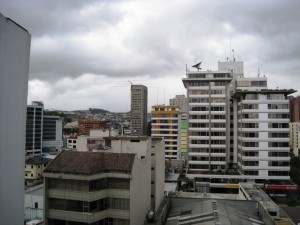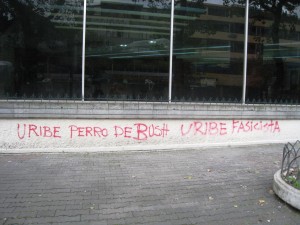Colon, Panama, the city associated with the mouth of the Panama Canal on the Caribbean side, was originally called Aspinwall by gringos. The name, Colon (in honor of Columbus), ultimately prevailed when Panamanian postmen finally refused to continue delivering mail addressed to Aspinwall. Colon is also widely known as one of the worst places on earth, and actually has been since its inception in 1850 when established at the Atlantic terminus of the Panama Transcontinental Railroad. Indeed, Ulysses S. Grant said in 1852, “I wondered how any person could live many months in Aspinwall, and wondered still more why any one tried.”
Completed in 1855, the first-ever transcontinental railroad was created to transit gold speculators from east to west since it was much easier and safer to travel by sea than through the rugged terrain of the middle United States. Gold Rush traffic provided Colon with enormous prosperity as hundreds of thousands of transients paid outrageously inflated prices for essential goods and services.
The transient nature of those passing through Colon, and the isthmus in general, lent to a Wild West culture throughout Panama. While some Forty-niners were pioneering and adventurous hard-workers by nature, others were highly unsavory characters: Gold Rush-obsessed, desperate, excessively and even homicidally greedy, and swindling and thieving with nothing to lose. As the railroad backed up and transit wait times increased, Colon bottlenecked and travelers combated boredom by drinking heavily, oftentimes while armed. The associated violence and riots and crime are notorious stories to this day.
Even with the Wild West stories and the ultimate bust of the Gold Rush, the importance of the Panama Railroad should not be underestimated. The need, convenience, and benefit of a transit option that eliminated the need to sail around Cape Horn had been long known. Many different projects and speculators tried and failed to accomplish this goal. At $8 million (in 1850’s dollars) for 47.5 miles, it remains the most expensive-per-mile railway ever built, requiring five years and taking 12,000 lives. At the height of the railroad’s prosperity, many world and political circumstances rather suddenly changed, including heavy taxation by Gran Colombia and the 1869 completion of the Union Pacific Railroad across the United States, both of which permanently undermined the railroad’s importance.
Ironically, the construction of the Panama Canal undermined the prosperity of the city of Colon. The city and its residents, particularly in the last 50 years, have not benefitted from the billions of dollars continuously flowing through Panama. The country as a whole reports a GDP of over $26 billion (in 2006), and a 7.2% unemployment rate (granted with an oversupply of unskilled labor, and an undersupply of skilled labor). The most recent information that I can locate specifically about Colon is from November of 2002 shortly after several days of riots and looting in the city’s center. That source claims a 40% unemployment rate in Colon, and more current estimates place unemployment as high as 75%. Additionally, Colon has some 52 murders per year … a shockingly high rate for a city of only 200,000 people and a far cry from the urban, thriving, and sophisticated Panama City just 50 miles away.
Many different reasons and rationalizations exist for this tremendous disparity. First, immigrant entrepreneurs dominate the skilled, and sometimes even the unskilled, labor force. Massive foreign investment brings its own prejudices. Rumor has it that the outsourcing of major Canal operations to the Chinese has absolutely clobbered the unskilled labor force in Colon. The Chinese companies brought in their own workers for nearly every job function … even for prostitution I’m told.
From some sources, my own experience, and anecdotal evidence, racism plays a fairly serious factor. Colon’s current population is largely descended from black people who came to Panama from the West Indies (some by choice, some by trickery, some by force) to work on the Canal. As such, many would argue that Colon’s economic state of affairs is basically ignored by the Panamanian government which provides incentives for foreign investors without labor stipulations, and creates stimulus packages for other Panamanian communities.
Additionally, in reading several sources, my opinion is that many government officials shirk responsibility and solidly place blame on the city’s residents as lacking initiative and dignity. I personally find this to be pretty unfair. When people have no work, no money, no education, no hope, and no opportunity, they steal and take drugs. No different in Colon than anywhere else.
We had heard the rumors about Colon and wondered how bad it could actually be. Everybody’s got a story and it usually involves larceny on the lower end, and severe violence on the upper end. Well, I’m here to tell you that it’s bad … very bad. We had to head into town to pay the generator repairman for services rendered, and it was very bad. From what I saw, not a single building stands sturdy and maintained … literally everything is dilapidated and deteriorating. Seemingly every block has at least one huge brick of rotting garbage as tall as a two story building. Groups of likely unemployed people mill about and congregate under the occasional shady stoop just passing idle time. Children without shirts or shoes play amongst gutters and garbage. Every single business has pad locks and chain link fences and barbed wire and bars on the windows and security. It’s positively tragic. I did not find the Free Zone to be much better.
 Luckily, Shelter Bay Marina is a little oasis. The internet connection is fairly reliable, the electricity is compatible (i.e. the boat plugs into shore power just fine), the Balboa beer is cold, and the food is pretty darn good.
Luckily, Shelter Bay Marina is a little oasis. The internet connection is fairly reliable, the electricity is compatible (i.e. the boat plugs into shore power just fine), the Balboa beer is cold, and the food is pretty darn good.
Wait … did I say oasis? I meant to say prison. If they had decent food, cold beer and internet access in prison, prison would be a lot like Shelter Bay. Located on the grounds of an abandoned U.S. military base (the former Fort Sherman), the marina is 30+ minutes from anything else and you really aren’t free to leave in any true sense of the word. And the staff (prison guards?) know this, pretty much setting world records for indifferent service (Bruce at the boat yard being an exception so notable as to require mentioning).
Shelter Bay Marina is not in Colon proper, but I think that some of those transient, Wild West tendencies are still at work here. Right now, the Canal is horribly backed up, wait times are preposterous, and the transients are drinking a lot. Like the old days, they are heavily armed, albeit only with hair-trigger tempers, crabbiness and know-it-all attitudes instead of rifles. I can’t say that I blame anyone too much — the Canal authority has rather blatantly shown their antipathy towards private yacht traffic by allowing passage for only 3-5 boats every other day (there is absolutely no justification for this), and most everyone at Shelter Bay is anxious to start a new and exciting portion of their journey … not to sit and roast, basting themselves with beer, in Central America’s lower large intestine. Basically, Shelter Bay Marina is a place where pissed-off people are incarcerated on a U.S. military base that’s intentionally highly isolated from the society that surrounds it – sort of like a certain place in southeastern Cuba, but minus the torture.
Nonetheless, we have met some very fun people and continue to check some action items off of our list. I enlisted the help of John and Shirlee on S/V Solstice to sort out the remaining details of the single sideband radio and our SailMail account which is a very welcome development before we embark into the great wide open. We also hauled the boat out of the water and had the bottom painted. After 6 months in the, ahem, “nitrogen-rich†Bahia de Cartagena, this massive and heart-stoppingly expensive job was necessary.


